ETH News
All stories that have been tagged with Spatial planning
Could the layout of trees impact human health?
News
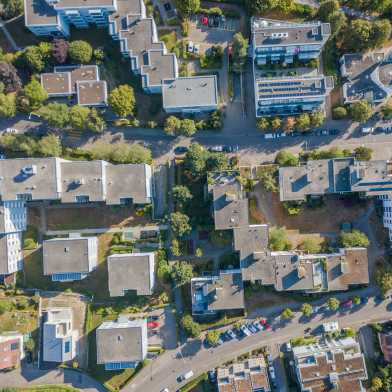
A long-term Switzerland-wide study has found that neighbourhoods with numerous, well-arranged trees exhibit lower mortality risks than other areas. The reasons behind this, and the factors that play a role, will require further research.
“The way that our cities, houses and flats are built right now makes us feel dependent.”
- News
- Homehero
- Globe magazine
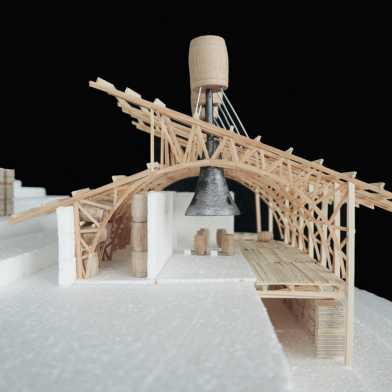
For many people, architectural norms create barriers to accessibility. How might we re-imagine our built environment to make it more inclusive?
From cell partitions to dams: These barriers are being investigated by ETH researchers
- Globe magazine
- Homehero
- News

Research areas at ETH Zurich span barriers in a wide variety of fields, including cell biology, drug delivery and spatial planning. Below, we look at examples from six different disciplines.
How Ukraine can rebuild its energy system
News
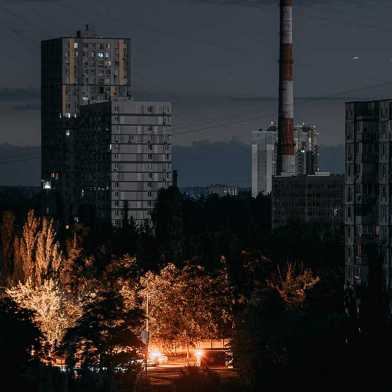
Researchers at ETH Zurich have been working with researchers from Ukraine and Germany to investigate how to rebuild Ukraine’s destroyed energy infrastructure based on renewable energy. They have determined that solar and wind energy would quickly deliver a distributed power supply system and prevent corruption.
What can cities do to promote acceptance of densification?
News
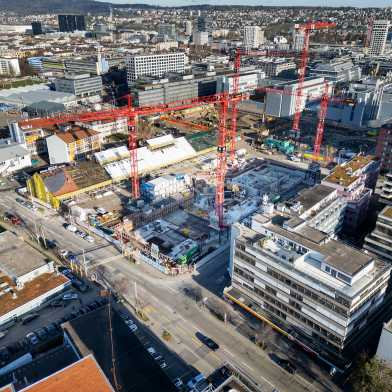
Swiss cities are more likely to accept densification when densification projects provide affordable housing and green spaces compared to densification that is implemented through reduced regulations for housing construction. By prioritizing a socio-ecological densification, extensive planning procedures and delays might be minimized.
For equitable access to urban green spaces
- News
- Zukunftsblog

Vacant land, community gardens and public parks are key resources for liveable cities. Fritz Kleinschroth calls on urban planners to focus on giving nature more space and on granting equitable access to green spaces.
How ETH knowledge and local expertise are helping the reconstruction of Ukraine
Homehero

Two years ago, Russia launched its war of aggression against Ukraine. One direct consequence of the conflict is the destruction of buildings and infrastructure. Now an exhibition in the ETH Main Building entitled “ETH with Ukraine” is showing how buildings, facilities and the environment in Ukraine can be protected or restored.
Music and design in harmony
- Globe magazine
- Homehero

Irma Radončić and Stefan Liniger are developing resource-friendly fabrication methods, which the two architects aim to employ in the creation of better and better concert spaces.
How Zurich has to change its roads to have more e-bikes than cars
News
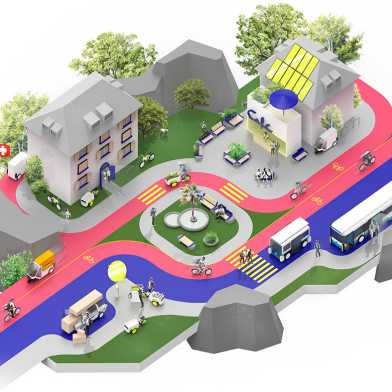
What happens when cities gear their road space primarily to the needs of cyclists and e-bikers? On a new popular-science website, ETH researchers use examples from the city of Zurich to show what such an “E-Bike City” could one day look like.
An advocate of public space
News
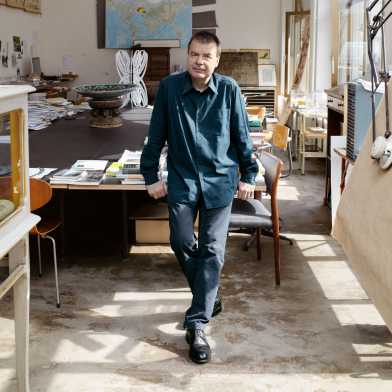
Günther Vogt is one of the most sought-after landscape architects of our time. He has opened the eyes of an entire generation of architects to public space. After 18 years as an ETH professor, he is now retiring.
Bear-human coexistence rethought
News

The media uproar over wolf attacks on livestock in Switzerland and a bear attack in Italy show how charged the issue of large carnivores and humans coexisting in Europe is. ETH Zurich researcher Paula Mayer has now created a participatory model to help facilitate human-bear coexistence using the example of the Apennine brown bear.
Student-made sensor facilitates climate-conscious design of public squares
- News
- Homepage

ETH students have developed sensors that can indicate how people use urban spaces. They anonymously measure how people use objects such as chairs in a public square. The sensors have proven useful in the test run and could be used in future to plan public spaces based on needs.
New housing developments displace vulnerable persons
- Zukunftsblog
- News
- Homepage
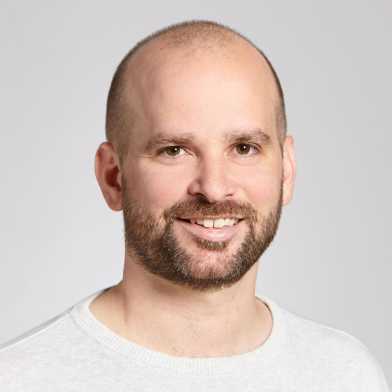
Focusing exclusively on new housing developments to counter the housing crisis is not sustainable, says David Kaufmann. His research group has been able to show that vulnerable persons are displaced to a much greater extent than previously thought in the Swiss canton of Zürich.
Where should wind turbines be constructed in Switzerland?
News

A study by researchers at ETH Zurich shows for the first time how a relaxation of Swiss spatial planning policy would affect the locations of wind turbines. If the aim is to have as few wind turbines as possible in the Alps and in Switzerland in general, it would be worth considering using windy agricultural areas on the western Swiss Plateau.
“Yes, but not like this!” – Why densification often lacks public acceptance
News
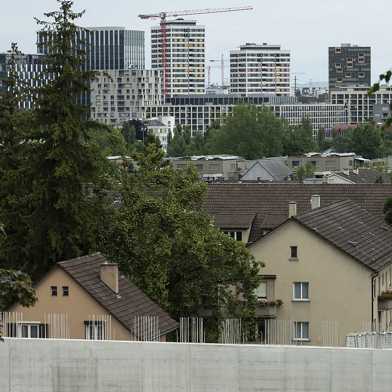
Densification is a fundamental principle of urban planning and development today. Nevertheless, it often encounters local resistance. A group of ETH researchers has now systematically investigated factors influencing public acceptance of densification, focusing on the canton of Zurich and six cities of global importance. One key factor: affordable housing.
If you work in Zurich, you should be able to live there – but where exactly?
Zukunftsblog

Much controversy surrounds the Neugasse project in the city Zurich. Spatial development scientist Sibylle Wälty shows how this area could contribute to alleviating the housing shortage: by building more densely than currently planned.
Calculate or co-create?
- News
- Globe magazine
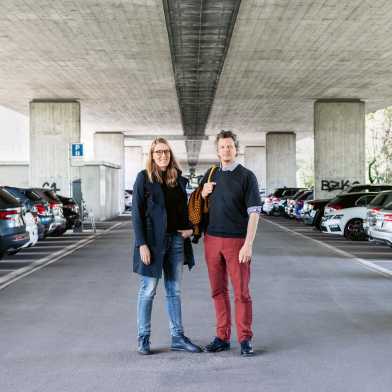
Beauty may be in the eye of the beholder – yet how do we find consensus on a shared amenity such as a neighbourhood? We took a stroll with two ETH architects to discover how they see their role as mediators between the conflicting priorities of urban consolidation, functionalism and aesthetics.
Walking to net zero
Zukunftsblog
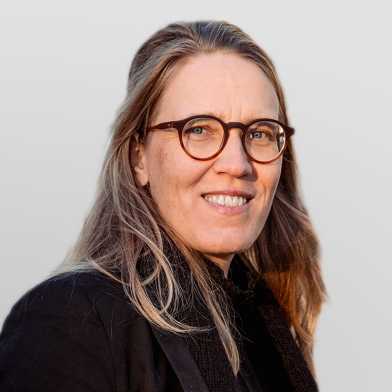
The Canton of Zurich recently adopted the net-zero 2040 climate protection target. Here Sibylle Wälty appeals for more 10-minute neighbourhoods, which, by making better use of the settlement area, will reduce emissions.
“It’s important to factor in how people feel”
News

In the race to combat climate change, sustainable transport systems can play a key role in reducing greenhouse gas emissions to net zero by 2050. As well as focusing on the technological issues at stake, current research also investigates whether there is public acceptance for the changes. Kay Axhausen explains this approach.
Attractive locations work like large planets
News
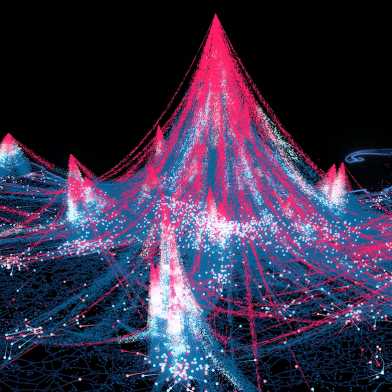
Using large-scale mobility data from diverse cities around the globe, researchers from ETH Zurich, MIT and the Santa Fe Institute discover a powerful yet surprisingly simple travel law that governs the number of visitors to any location in a city.
Hönggerberg campus development finds approval
News
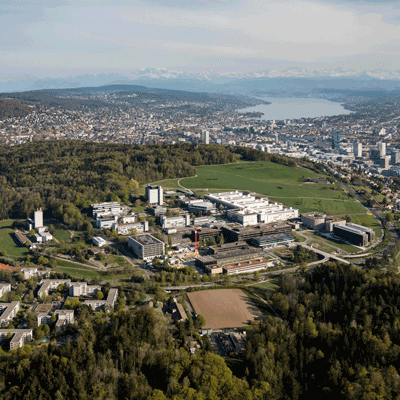
Implementation of the “ETH Campus Hönggerberg 2040” vision has taken a major step forward. Zurich’s municipal council approved the outlines of the plans for the future campus development with few changes.
Who’s evaluating Swiss landscapes?
Zukunftsblog
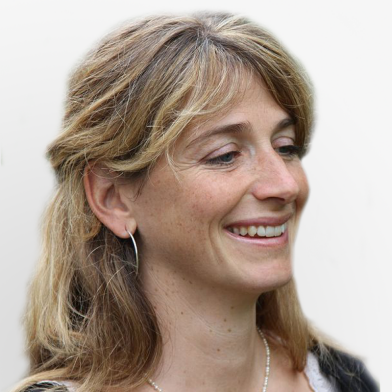
If beauty is in the eye of the beholder, how do you define a beautiful landscape? Machine learning algorithms can be helpful here, says Adrienne Grêt-Regamey.
How the campus of the future will develop
News
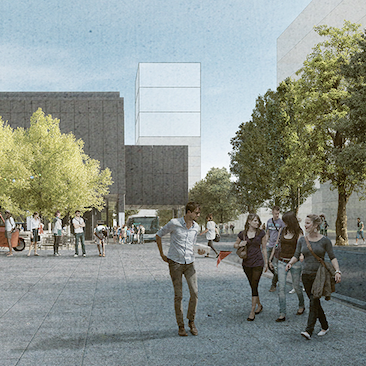
ETH Zurich is developing its campus of the future at Hönggerberg – today, the city council of Zurich set another milestone in the development of an urban campus for teaching, research and exchange.
Welcome to the future
News
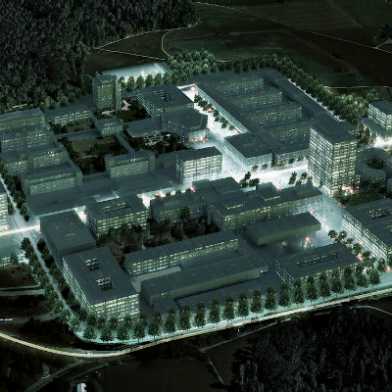
The Campus Hönggerberg 2040 project lays out a vision for the ETH campus of the future. At the same time, however, space is becoming increasingly scarce for ETH. Why is that? And how can we overcome this challenge in order to create inspiring workplaces?
How the road network determines traffic capacity
News
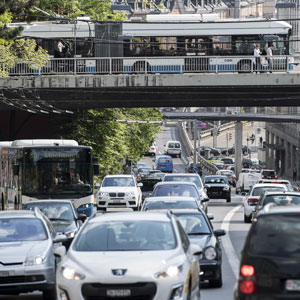
ETH researchers have shown that we can use the structure of urban road networks to predict their traffic capacity. This information enables urban and transportation planners to quantify how changes will influence traffic volumes.
Learning in the urban lab in Singapore
News
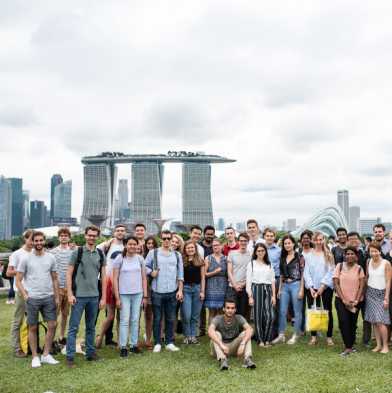
Students from 12 departments took part in the first “ETH Singapore Month”, a “classroom” more than 10,000 kilometres away from the Zurich campus. Within an intensive month, they crossed disciplinary boundaries to develop proposals to address complex problems posed by urbanisation.
Forests instead of cathedrals
Zukunftsblog
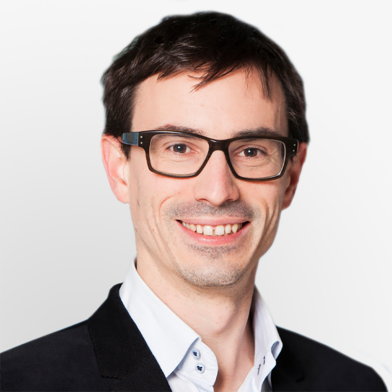
Notre Dame should not be rebuilt, argue Guillaume Habert and Alice Hertzog. In times of climate change and in light of the current religious landscape its reconstruction is no longer a priority.
The advantages of a doppelgänger city
Zukunftsblog
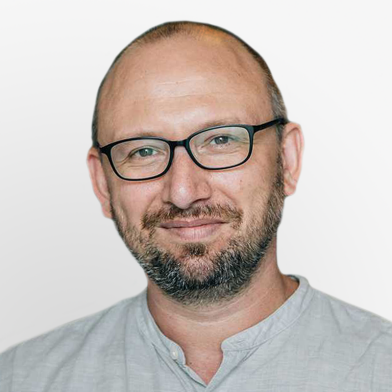
Pieter Fourie explains how smartphone location data can be analysed without violating the users’ privacy.
The cultural heritage of ETH
News

ETH Zurich archives cultural assets and makes them available to the public. At the same time, it makes an impact on Swiss culture like almost no other institution.
A planner and firm believer in Swiss democracy
News
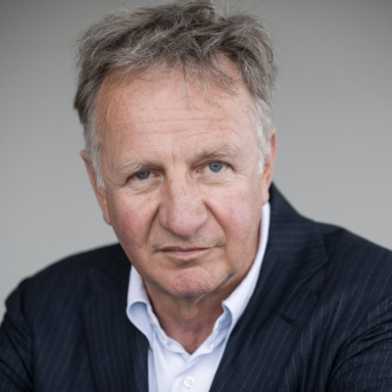
As a spatial planner, Bernd Scholl spent his career planning how to design areas for the future. His search for comprehensive solutions involving transport, settlement and landscape made him a resolute supporter of Switzerland’s direct democratic system. Portrait of a passionate spatial developer.
Breathtaking roofs and new students
News

Digital fabrication techniques for buildings and breathtaking concrete roofs, a heart made of silicone, and a new degree programme in medicine; in 2017, teaching and research at ETH Zurich were characterised by new ventures and a pioneering spirit.
Cities facing climate change
News
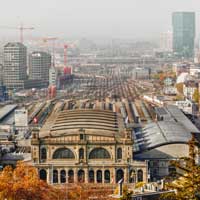
Cities both drive climate change and suffer its effects. As havens of innovation, however, they also have the ability to change. The ETH Klimarunde invites residents to discuss challenges and solutions for cities experiencing climate change.
What is the key to successful inward development?
Zukunftsblog
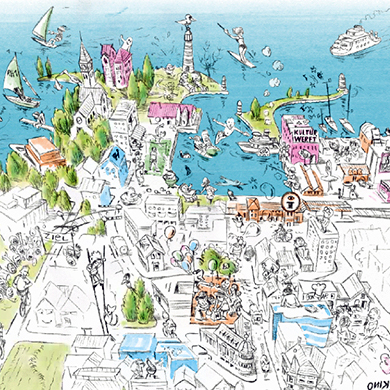
The small and medium-sized municipalities own a large share of the settlement area reserves, but often lack sufficient resources and expertise to implement inward development. Successful settlement development requires both a spatial vision and a strategy; good examples can serve as a useful guide here.
City model created from images alone
News
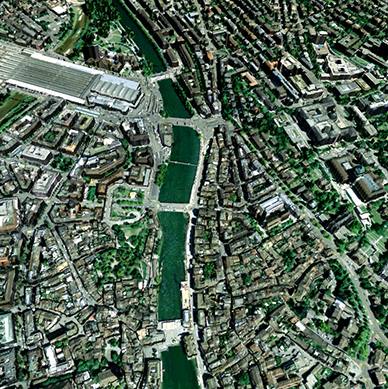
ETH scientists have combined millions of images and videos into a three-dimensional, living model of the city of Zurich. The new technology has many possible applications – for example, it can analyse where and when pedestrians are on the move and parking spaces become free.
Nature conservation as landscape architecture
Zukunftsblog
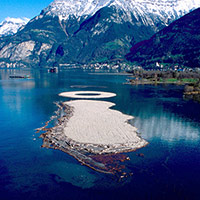
Conservationists must learn to design the ecological landscape of tomorrow instead of mourning lost nature. Landscape architecture can serve as a model for this.
Improving resilience through diverse land stewards
Zukunftsblog

Biodiversity has been shown to increase the resilience of ecosystems to global change. But what fosters the resilience of socio-ecological systems? We have shown that in order to build and maintain resilient mountain landscapes, we need not only a diversity of species, but a diversity of land stewards.
Radical Cairo in Shenzhen
Zukunftsblog
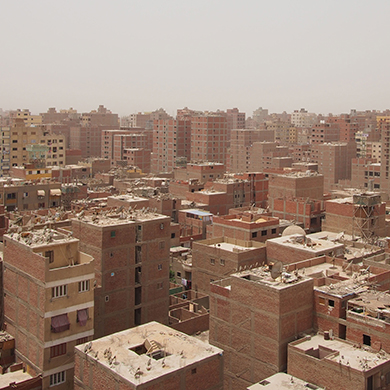
It is not too often that Cairo’s informal settlements are hosted at an international architecture event, especially not as a positive case. This year, the “informal” area of Ard-El-Lewa is prominently featured at the Bi-City Biennale for Urban Development and Architecture in Shenzhen, in the Radical Urbanism section.
The urbanised world
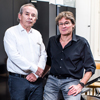
Urbanisation is transforming the world. In an interview with Marcel Meili, ETH Professor of Architecture and Design, and Christian Schmid, Deputy Head of Network City and Landscape, the two explain why cities around the world are expanding and what is special about the urban landscape in Switzerland.
Vorkämpfer, Vordenker und Vorbilder für die Raumplanung Schweiz
Zukunftsblog

Die Schweizer Raumplanung kann für die anstehenden Aufgaben viel von ihren Pionieren lernen. Diese setzten sich leidenschaftlich für einen Schutz der Landschaft und die nachhaltige Planung und Gestaltung des Lebensraums ein. Mit der Ausstellung «Die Schweiz plant» eröffnet die ETH Zürich erstmals einen Blick auf diese Pionierleistungen.
Tropical Town: Seeding Sustainable Settlements
Zukunftsblog
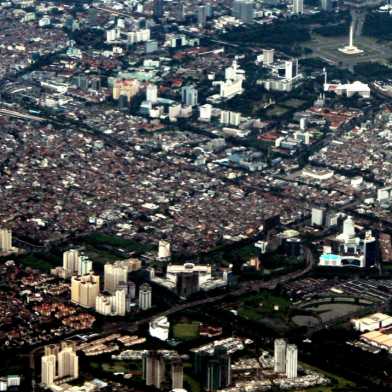
In Asia and Africa, rapid urbanisation has seen human populations move to cities on an unprecedented scale. Increasingly, the inability to settle these new urban dwellers into formal housing, and the inability to engage them economically and socially is bringing about serious urban issues.
“Never before has urbanisation mattered as much”
News
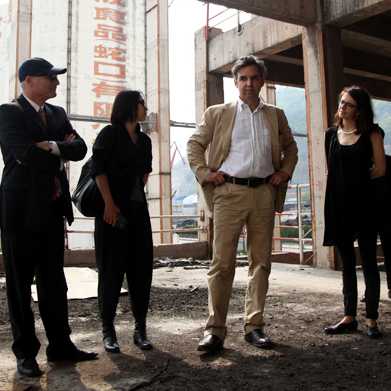
The "Bi-City Biennale of Urbanism / Architecture Shenzhen" is the largest of its kind. This year, the ETH professors of architecture Alfredo Brillembourg and Hubert Klumpner are part of the four-person curatorial team. An interview with the two co-curators.
Broad support for the Innovation Park in Dübendorf
News
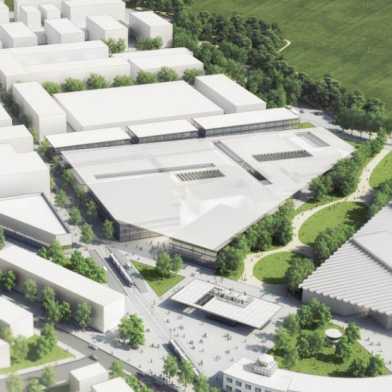
The Federal Council is pushing ahead with the Swiss Innovation Park: it intends to make 350 million francs available and give the operators land with planning permission. ETH Zurich has been supporting the project for over ten years.
6 professors at ETH Zurich appointed
News

The ETH Board appointed six professors at ETH Zurich as part of its meeting of 4/5 March 2015, in accordance with the application submitted by ETH Zurich President Lino Guzzella.
Gefangen im Netz?
Zukunftsblog
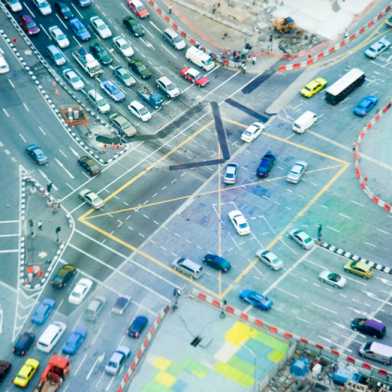
Weltweit wachsen die Megastädte und immer mehr Menschen zieht es in grosse Agglomerationen. Wie können wir heute die besten Verkehrsnetze für die Städte von morgen planen?
«Warum nicht endlich Wald roden?»
Zukunftsblog

Der Wald geniesst in der Schweiz seit über hundert Jahren einen absoluten Schutz. Die Waldfläche wächst. Der Ruf wird lauter, dass wir statt wertvolles Ackerland zu überbauen doch Wald roden sollen, um mehr Siedlungsfläche zu schaffen. Damit wäre das Platzproblem endlich zu lösen – klingt logisch, oder? «Endlich» ist leider auch das Stichwort, warum dies keine Lösung ist.
Transforming an avenue in the tropics
News
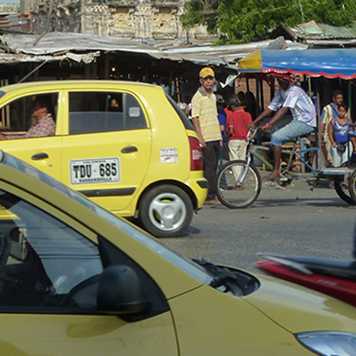
What could a section of Calle 30 in the Colombian coastal city of Barranquilla look like in the year 2035? A group of 24 students from four departments at ETH Zurich and Universidad del Norte turned their attention to this question during an exceptional intercultural and transdisciplinary learning event supported by Innovedum.
Taking stock and exhibiting the results
News
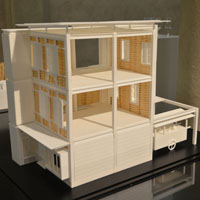
ETH Zurich’s Future Cities Laboratory (FCL) in Singapore is undertaking several research projects into sustainable urban development and architectural design. A selection of these research projects is now being presented for the first time as part of an exhibition at ETH Zurich.
Unantastbarer Wald – zeitgemässer Schutz?
Zukunftsblog

Jede Sekunde geht in der Schweiz mehr als ein Quadratmeter Kulturland verloren – zehn Fussballfelder pro Tag. Oft handelt es sich um Fruchtfolgeflächen. Angesichts der rasanten Zersiedelung drängt sich die Frage auf, ob der restriktive Schutz des Waldes noch verhältnismässig ist.
Allotments will have to make way for building
News
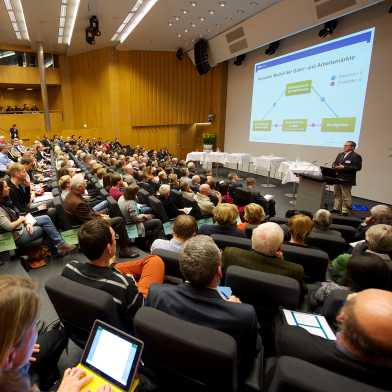
Experts from the fields of research and practice convened on Friday to discuss the living space of the future. ETH’s spatial planning discussion focused on how Switzerland’s recently revised spatial planning act could be implemented. It was unanimously agreed that high-density building is the only way of stopping the urban sprawl.
Raumplanung: Innenentwicklung vor Aussenentwicklung!
Zukunftsblog

Damit die Schweiz nicht weiter zersiedelt wird, braucht es ein Umdenken in der Siedlungsentwicklung. Wie sieht die Grundausrichtung der schweizerischen Raumentwicklung für die nächsten Jahrzehnte aus?